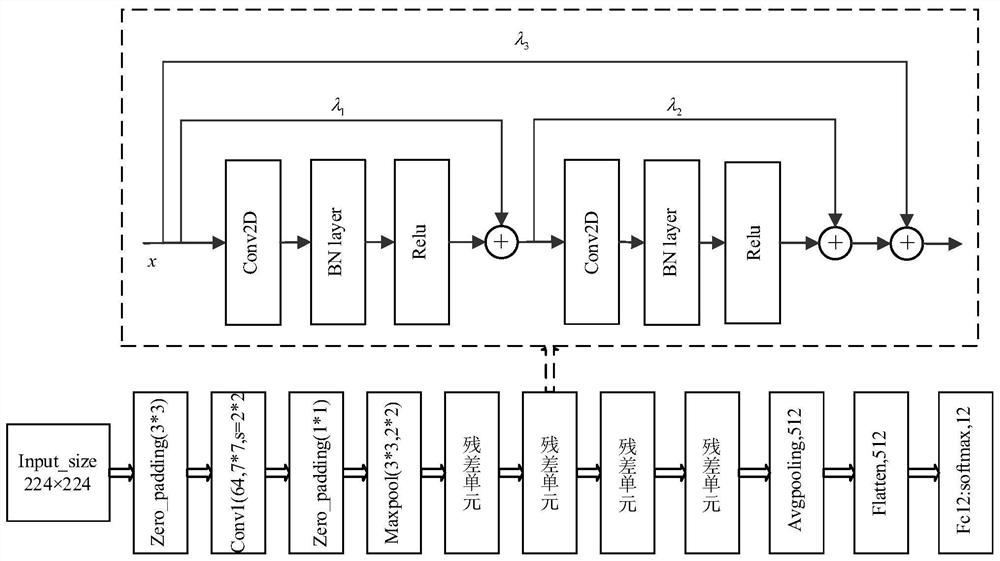Radar radiation source identification method based on multistage jumper residual network
A recognition method and radiation source technology, which are applied in the recognition of patterns in signals, neural learning methods, character and pattern recognition, etc., can solve problems such as the need to improve the recognition performance, increase the number of network layers, and the disaster of dimensionality, and achieve subtle features. Excellent extraction ability, improve efficiency, and suppress the effect of cross terms
- Summary
- Abstract
- Description
- Claims
- Application Information
AI Technical Summary
Problems solved by technology
Method used
Image
Examples
Embodiment Construction
[0055] The technical solutions of the present invention will be further specifically described below through the embodiments and in conjunction with the accompanying drawings. In the specification, the same or similar reference numerals designate the same or similar components. The following description of the embodiments of the present invention with reference to the accompanying drawings is intended to explain the general inventive concept of the present invention, but should not be construed as a limitation of the present invention.
[0056] see figure 1 , which shows the flow of a radar emitter identification method based on a multi-level jumper residual network according to an embodiment of the present invention. The present invention proposes a deep residual network based on time-frequency feature extraction. First, smooth pseudo-Wigner-Ville time-frequency transformation is performed on the radiation source signal to generate a time-frequency image. After preprocessing,...
PUM
 Login to View More
Login to View More Abstract
Description
Claims
Application Information
 Login to View More
Login to View More - R&D
- Intellectual Property
- Life Sciences
- Materials
- Tech Scout
- Unparalleled Data Quality
- Higher Quality Content
- 60% Fewer Hallucinations
Browse by: Latest US Patents, China's latest patents, Technical Efficacy Thesaurus, Application Domain, Technology Topic, Popular Technical Reports.
© 2025 PatSnap. All rights reserved.Legal|Privacy policy|Modern Slavery Act Transparency Statement|Sitemap|About US| Contact US: help@patsnap.com



